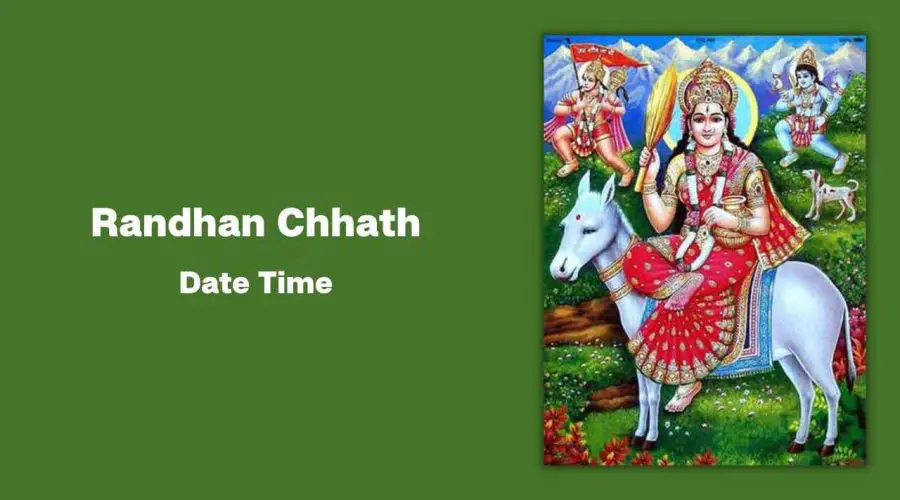Randhan Chhath 2023 (Gujarat): Know Its Date, Time, Importance and Rituals
Randhan Chhath is a unique ritual observed in Gujarat in Shravan month, the day is dedicated to preparing food for Goddess Shitala.
Randhan Chhath 2023 Date
Randhan Chhath : Monday 4th September 2023
Randhan Chhath Puja Muhurat/Timings:
Shashthi Tithi Starts = 4:41 PM on 4-September-2023
Shashthi Tithi Ends = 3:45 PM on 5-September-2023
In Gujarat, it is celebrated on the sixth day of the Krishna Paksha (the waning phase of the moon) in the month of Shravan. The purpose of the day is to prepare food (randhan) for the next day, Shitala Satam.
This Chhath of the Shravan Krishna Paksha is not a ritual, but rather a day of preparation for the following day. On Shitala Satam (the following day), no food is made; only the food prepared on Randhan Chhath is consumed.
Two Different Dates
In Gujarat, Randhan Chhath is observed at two different times. Shravan Shukla Paksha is the preferred time in some regions of Gujarat, notably those that border Maharashtra. Shravan Krishna Paksha is the preferred time in Saurashtra.
Importance and How To Observe Randhan Chhath
All meals for the day must be prepared prior to the end of the Chhath tithi. No food should be prepared the next day. As Mata arrives and bathes in the ash, the fireplace (cooking pot) must be kept cool.
What Food is prepared on Randhan Chhath ?
The only food items that will last for 24 hours are made. Every woman in the household participates in cooking. Some individuals prefer spicy and fried foods.
The daily meal differs from region to region. Today, in addition to regional cuisines, individuals often create foods that can last for several days outside.
The day’s menu includes laddos, thepla, sweet dhebra, paratha, several sorts of shaak, maunthar, bajra rotla, sabudana khichadi, mamra, vada, teeka dhebra, sheera, and puri.
Why Ash in the fireplace used for cooking is left untouched?
Following the completion of cooking on Randhan Chhath, the clay hearth is cleansed with cow dung. The ash remains within the fireplace. A cotton sapling is placed in the fireplace. Then, some curd is added to the frying location.
There is a prevalent belief that the goddess Shitala Mata resides in the ash and will bless the household by rolling on it.

